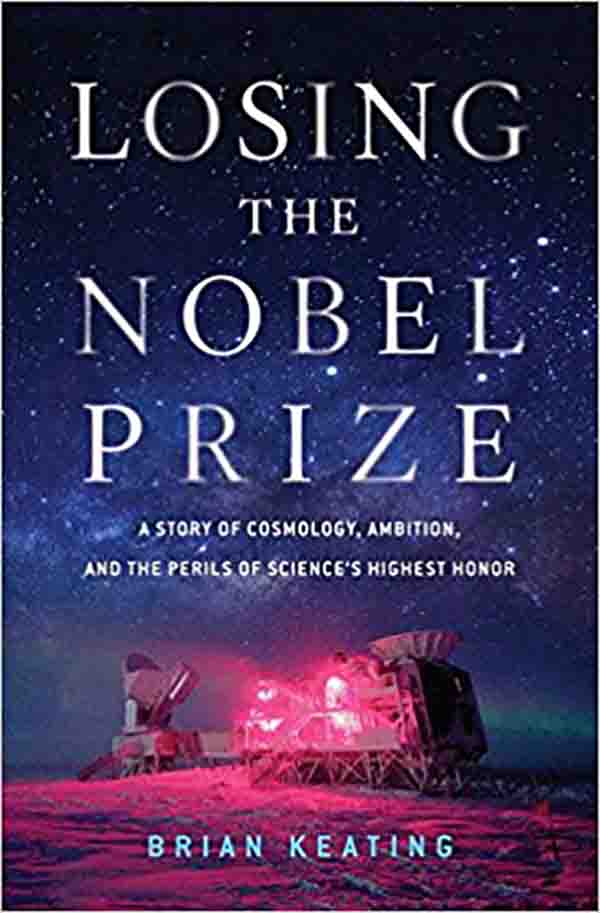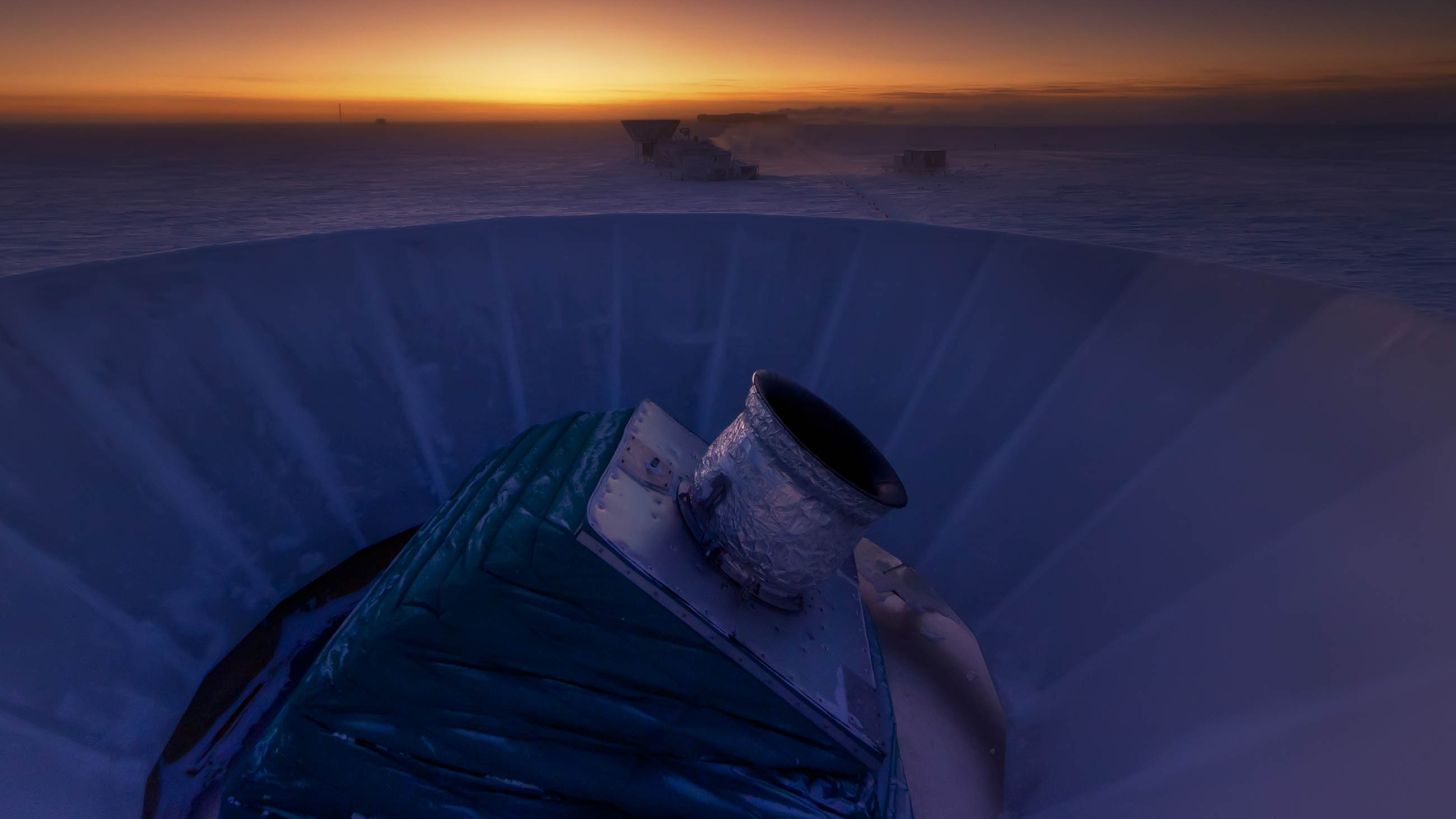In 2014, a team of astrophysicists excitedly made an announcement that received worldwide media attention. They claimed to have discovered evidence of primordial gravitational waves — confirming the theory of cosmic inflation, which proposed to explain how the universe rapidly expanded just moments after its tumultuous birth. It was a Nobel-worthy discovery — if only the team had been right.

BOOK REVIEW — “Losing the Nobel Prize: A Story of Cosmology, Ambition, and the Perils of Science’s Highest Honor,” by Brian Keating (W.W. Norton, 352 pages).
In “Losing the Nobel Prize,” Brian Keating, a cosmologist at the University of California, San Diego — and a key player in the collaboration, known as BICEP2 — offers some painful post-mortems to explain where it went wrong.
Part of it was the rush to beat their competition, he argues, and part of it was the Nobel Prize itself. Keating dissects the Nobel’s shortcomings and offers his own recommendations for reforming the physics prize. He insists it’s not sour grapes; instead, he’s calling for long overdue changes without which the Nobel will continue to distort the public’s view of science.
Keating gives a detailed history of BICEP2, beginning with the idea he ambitiously pitched in the early 2000s as a postdoctoral researcher, a radiotelescope that would be installed at the South Pole under his lead. The original project was called BICEP, for Background Imaging of Cosmic Extragalactic Polarization; he continued the research as a member of BICEP2.
Eventually the scientists managed to find what they thought was the signal of polarized light they’d been thirsting for. But after their bold announcement, an analysis by astrophysicists from the European Space Agency’s Planck telescope, which included data at other frequencies, showed that the signal was mostly due to clouds of dust in our own Milky Way, and likely not anything in the distant universe or distant past.
What should BICEP2 have done differently? For one thing, Keating writes, the team was so anxious about being beaten by its rival Planck that it announced its findings before they could be subjected to a thorough peer review. While peer review is no panacea, an independent researcher might have noticed that the team hadn’t adequately accounted for dust clouding their view. Worse, they snagged a figure from a Planck scientist’s PowerPoint slide in an effort to discount the effects of dust — not only an ethically dubious move, as Keating acknowledges, but one that turned out to be an inaccurate indicator of the problem.
He also points out that science journalists recognized that they could have better emphasized the tentative nature of the results. The pressures of reporting breaking news with an attention-grabbing headline precluded the skeptical investigation that such a putative discovery deserved.
Throughout this story, Keating weaves in, or at times shoehorns in, fundamental flaws of the Nobel Prize in Physics. First, the Nobel can be awarded to at most three people, though most science these days involves large collaborations and important contributions by both theorists and experimentalists. A thousand scientists participated in the LIGO collaboration that finally did detect gravitational waves (from “nearby” black hole pairs rather than from the early universe that BICEP2 cited), but only three were awarded the 2017 Nobel.
Second, a Nobel cannot be awarded posthumously, even though many influential scientists, including women and people of color, have been missed or snubbed in the past and deserve to have their achievements recognized.
As an example, Keating brings up Vera Rubin, whose 1960s’ and 70s’ measurements of star velocities in the outskirts of galaxies proved a crucial piece of evidence that all those stars were being held together by the pull of gravity from the mysterious substance called dark matter. Rubin died in December 2016 without having received the Nobel; in fact, dark matter has yet to be recognized for a Nobel. The unseen substance hasn’t been directly detected yet, but the same could be said for dark energy, which nonetheless was honored with a Nobel in 2011.
It’s not clear why the Nobel committee doesn’t drop these antiquated restrictions — especially since they were never mentioned in Alfred Nobel’s will, but imposed after he died. Keating recommends that the Nobel committee start awarding groups and allow retroactive and posthumous awards, not just to Rubin but to others like Lise Meitner and Jocelyn Bell Burnell. Just two out of 206 physics prize winners have been women.
He also suggests that new fields should be added; environmental sciences and even biology don’t have their own awards. And the committee should publicly announce nominees, as is done with the Academy Awards.
Keating argues that Nobels should primarily go to “serendipitous” discoveries, rather than ones that merely confirm an earlier theoretical prediction (sometimes by theorists who have long since died). But he doesn’t clearly define what counts as serendipity. No discovery happens in a vacuum, and no matter how lucky one is, it’s not possible to serendipitously trip over a gravitational wave.
Since Keating’s book highlights what the Nobel overlooks, it’s only fair to point out what his account leaves out. For example, though he brings up gender equality in science, he hardly discusses race. He mentions the COBE satellite, which made it possible to see fluctuations in cosmic background radiation that were honored with a Nobel in 2006, but he makes no mention of its Soviet predecessor Relikt-1, which put an upper limit on them. That would have been a good opportunity to demonstrate the role of networking and publicity, which NASA understood and Soviet scientists generally did not.
Debates about the strength of the science behind cosmic inflation and its implications for a plethora of unobserved parallel universes called the “multiverse” have flared up in recent years, and Keating’s book could have explored them in more depth. He introduces the concept of “falsifiability” of scientific theories, proposed by the philosopher of science Karl Popper, but he neglects 80 years of philosophy of science since then that would have added much-needed nuance.
His discussion of federal versus private funding of science could have gone into more depth as well. BICEP was supported by the National Science Foundation, while Keating has also become the director of the Simons Observatory, funded by the foundation led by the billionaires Jim and Marilyn Simons. Science can be shaped by philanthropists or by members of Congress; the latter are at least in principle accountable to the public. Keating points out that in an era of scarce science funding, the rich get richer: Scientists who received a grant or accolade early in their careers — who tend to be white and male — continue to grab more of them, leaving less to go around.
“Losing the Nobel Prize” provides an engaging examination of challenges that scientists, especially cosmologists, face today. Keating does become repetitive at times, continually invoking his hero Galileo, the dust problems, and BICEP2’s fateful encounter with confirmation bias. His penchant for nerdy jokes and puns can make the reader groan — at one point he cites the Biblical phrase about taking the plank out of your own eye before removing the speck of dust from your brother’s, then adds, “The dust was dust and the plank was Planck.”
Though the BICEP2 team made mistakes that were arguably amplified by media coverage, the situation has a silver lining. As it played out in public, it provided a helpful lesson about how science actually works. Science today is not just more collaborative, diverse, and deliberate than Nobel Prizes might suggest — it’s also a messy process.
Ramin Skibba (@raminskibba) is an astrophysicist turned science writer and freelance journalist who is based in San Diego. He has written for The Atlantic, Slate, Scientific American, Nature, and Science, among other publications.











Comments are automatically closed one year after article publication. Archived comments are below.
I think the above comments display the unusual nature of an extremely interesting new book, which I found hard to put down once I started reading. This book clearly organizes and presents to the layman interested in cosmology and astronomy an engrossing exploration of the realities of a career at the forefront of cosmic research and the practical impacts of the Nobel Prize on the advancements these remarkable sciences.
The Nobel Prize should not be confused with awards that can be diffused to acknowledge the disparity of success amongst the races and sexes. We might encourage the Academy Awards to better appreciate the contributions of Black, Latino and female actors and producers as a means to level the field and break glass ceilings, but this is very different than the Nobel Prize. To argue that the Nobel Committee should now embark on affirmative action in awarding the science prizes is to confuse actual accomplishment with desired opportunity. Yes, we want minorities and women to have better chances to embark on scientific careers. But promoting lesser accomplishments, or bending the rules (by awarding posthumous awards to women) won’t work. The result would be a diminished value to the most important prize in the world. The award recognizes individuals of accomplishment, not teams, governments, financiers or gravestones.
When there’s no major downside to getting it wrong, scientists of this era are going to continue to rush their work to press (much like modern journalists do).